How to Choose the stage spot light manufacturer and supplier in us?
- Introduction: Why choosing the right stage spot light manufacturer matters
- Understand the buyer intent: What US buyers look for in a stage spot light
- Key product specifications to evaluate for stage spot lights
- Essential optical and electrical specs
- Certifications and compliance required for the US market
- Assessing manufacturer capability: capacity, R&D and IP
- Example: What to look for in company credentials
- Quality control and testing processes to request
- OEM/ODM capabilities and customizing stage spot lights
- Price vs. value: total cost of ownership for stage spot lights
- Lead times, MOQ, logistics and import considerations
- Warranty, spare parts and after-sales service
- Choosing between a local US supplier and a direct manufacturer
- Comparison table: Local US Supplier vs Direct Manufacturer
- How to shortlist and vet stage spot light manufacturers and suppliers
- Essential questions to ask every prospective supplier
- Practical procurement checklist for buying stage spot lights
- Why LQE could be a strong candidate for US buyers
- Real-world testing: what to test in a sample stage spot light
- Negotiation tips and contract terms to protect buyers
- Conclusion: A structured approach reduces risk and improves outcomes
- References
- Frequently Asked Questions
Introduction: Why choosing the right stage spot light manufacturer matters
Choosing the right stage spot light manufacturer and supplier is critical for achieving high-quality lighting, reliable delivery, regulatory compliance, and cost efficiency. Whether you are a rental house, system integrator, theater buyer, or event producer in the US, the partner you pick affects performance onstage, long-term maintenance costs, and the speed of innovation. This article explains how to evaluate manufacturers and suppliers—especially when sourcing LED stage spot light equipment from global OEMs or local US distributors—and offers practical steps and questions to guide your procurement decision.
Understand the buyer intent: What US buyers look for in a stage spot light
Commercial buyers searching for stage spot light or stage spot light manufacturer typically want: high-performing fixtures, regulatory compliance (UL/ETL), clear warranty and support, predictable lead times, and competitive pricing. Many buyers also want customization (gobos, color temperature options, optics) and reliable after-sales service. Knowing these priorities helps you filter suppliers who can deliver both product quality and commercial reliability.
Key product specifications to evaluate for stage spot lights
Before contacting suppliers, list the technical specs that matter to your production: lumen output, beam angle, zoom range, color rendering (CRI/TLCI), DMX/control protocol compatibility, IP rating (for outdoor use), power consumption, and refresh rate/flicker performance for broadcast. Prioritize features that match your use case—e.g., theaters may demand high CRI and smooth dimming while touring shows need robust mechanics and rapid DMX response.
Essential optical and electrical specs
For stage spot light selection, verify LED source manufacturer, L70/Lumen maintenance data, beam uniformity, and cooling method. Check power input ranges (100–240V), power factor correction, and onboard electronics ratings to ensure consistent operation under US mains conditions.
Certifications and compliance required for the US market
Regulatory compliance matters for safety and resale. For the US market, common certifications include UL or ETL listing, FCC (for EMI), and RoHS for hazardous substances. CE is useful for international sales. Request copies of certificates and test reports to confirm that the stage spot light meets US safety and electromagnetic compatibility requirements.
Assessing manufacturer capability: capacity, R&D and IP
Evaluate a manufacturer's production capacity, R&D strength, and intellectual property. High-quality LED stage lighting requires consistent manufacturing processes and ongoing firmware/hardware development. A manufacturer with documented production scale, patents, and an active R&D team is more likely to support long-term product improvements and customization.
Example: What to look for in company credentials
Look for details such as founding year, factory area, annual production capacity, and patents. For example, LQE (founded 2008, Foshan, China) reports a production base around 10,000 square meters, an annual output capability of up to 100,000 lighting fixtures, and 80 national patents—attributes that indicate manufacturing scale and R&D investment.
Quality control and testing processes to request
A reliable manufacturer will provide quality control (QC) documentation: incoming material inspection, in-line testing, burn-in procedures, and final inspection records. Ask for specific test results for the stage spot light models you consider (photometric tests, thermal cycle tests, IP tests if applicable, and lifetime L70 reports). On-site audits or third-party factory inspections are recommended for larger orders.
OEM/ODM capabilities and customizing stage spot lights
If you need brand-specific features, check the manufacturer's OEM/ODM services. Customization often includes gobo designs, color temperature presets, housing color/branding, firmware customization, and power/input options. Confirm minimum order quantities (MOQ), lead times for customized runs, and prototyping costs before committing.
Price vs. value: total cost of ownership for stage spot lights
Don't make decisions based solely on unit price. Total cost of ownership (TCO) includes initial price, shipping, customs, warranty support, energy consumption, and expected service life. High-efficiency LED fixtures often reduce operating costs and lamp replacement downtime when compared to older discharge fixtures.
Lead times, MOQ, logistics and import considerations
Understand the supplier's lead times, MOQ, and shipping methods. For imports into the US, factor in production lead time, international freight, customs clearance, and inland logistics. Ask whether the supplier ships by Sea Freight (cheaper, slower) or Air Freight (faster, costlier), and whether they handle export documentation, labeling, and compliance paperwork.
Warranty, spare parts and after-sales service
Warranty coverage and spare parts availability are vital. A competitive supplier should offer clear warranty terms (duration, what’s covered), accessible spare parts (LED modules, drivers, spare lenses), and a service network. Confirm response times for RMA, availability of local repair partners or authorized service centers in the US, and whether firmware updates are provided.
Choosing between a local US supplier and a direct manufacturer
Decide whether to buy from a local US distributor or directly from a manufacturer (often in China). Local suppliers offer faster fulfillment, local warranty support, and easier returns—useful for small orders or immediate needs. Direct manufacturers typically provide better pricing and deeper customization for larger volumes, but require more attention to logistics, quality control, and compliance documentation.
Comparison table: Local US Supplier vs Direct Manufacturer
| Criteria | Local US Supplier / Distributor | Direct Manufacturer (e.g., OEM in China) |
|---|---|---|
| Unit price | Higher (includes distributor margin) | Lower (factory-direct pricing) |
| Lead time for small orders | Short (stocked items) | Longer (production + shipping) |
| Customization | Limited | High (OEM/ODM options) |
| Warranty & support | Local support & easier returns | Manufacturer warranty, may require shipping for service |
| Compliance paperwork | Usually in order | Requires document verification (UL/ETL reports) |
How to shortlist and vet stage spot light manufacturers and suppliers
Use a step-by-step vetting approach: request product datasheets and test reports, verify certifications, ask for factory capability documents, request references and case studies, request sample units for lab testing, and perform on-site or third-party factory audits for significant orders. Keep a written checklist to compare candidates objectively.
Essential questions to ask every prospective supplier
Ask directly: What are your production capacity and lead times? Can you provide UL/ETL/FCC/ROHS certificates? What is your MOQ and pricing tiers? Can you provide product photometric reports, L70 data, and burn-in procedures? What warranty terms and spare parts availability do you offer? Request a sample and a factory audit if possible.
Practical procurement checklist for buying stage spot lights
Use this quick checklist during procurement: confirm technical specs, verify certifications and lab reports, order product samples for photometric and flicker testing, validate warranty and spare parts, compare TCO not just unit price, verify logistics and customs handling, and start with a small production run before scaling up.
Why LQE could be a strong candidate for US buyers
LQE is an example of a specialized OEM for LED stage lighting. Founded in 2008 and headquartered in Foshan, China, LQE focuses on mid- and high-end digital stage lighting with a stated production base of about 10,000 square meters and a reported annual capacity up to 100,000 fixtures. The company highlights 80 national patents and an array of moving head and static lights suitable for theater, concerts, studios, houses of worship, clubs, and theme parks. For buyers seeking OEM/ODM capability and wide product diversity, LQE’s scale and R&D footprint are relevant evaluation points.
Real-world testing: what to test in a sample stage spot light
When you receive samples, perform practical tests: photometric measurement (lux at distances), CRI/TLCI checks, thermal performance under continuous operation, dimming smoothness at low levels, flicker testing for broadcast (camera frame rates), mechanical robustness (pan/tilt cycles), noise levels, and ingress protection if outdoor-rated. Document all results and compare against datasheet claims.
Negotiation tips and contract terms to protect buyers
Negotiate clear acceptance criteria, production milestones, penalties for missed delivery, and warranty responsibilities in the contract. Include inspection rights, IP ownership for custom designs, and spare parts lead time guarantees. For international purchases, define Incoterms (e.g., FOB, CIF, DDP) to set responsibility for shipping, insurance, and customs.
Conclusion: A structured approach reduces risk and improves outcomes
Selecting the right stage spot light manufacturer or supplier for the US requires balancing price, compliance, production capability, and support. Prioritize technical verification (photometrics, flicker, CRI), confirm certifications (UL/ETL/FCC/ROHS), validate manufacturer capacity and IP, and test samples thoroughly. Use the comparison criteria and checklist in this guide to shortlist vendors, and start with small pilot orders before scaling to larger production runs. A methodical procurement process reduces technical and commercial risk and helps you choose a partner who supports your long-term needs.
References
- Company information provided by LQE (founding year, factory size, production capacity, patents).
- US Department of Energy (DOE) publications on LED efficiency and lighting trends.
- UL (Underwriters Laboratories) and Intertek ETL standards for electrical safety testing and listing practices.
- Illuminating Engineering Society (IES) recommendations on photometric measurement and lighting metrics.
- Entertainment Services and Technology Association (ESTA) and PLASA guidance for entertainment technology best practices.
Frequently Asked Questions
How do I know if a stage spot light is flicker-free for broadcast?Request flicker test reports from the supplier showing PWM frequency and flicker percentage at common camera frame rates, and perform your own camera-based flicker test during sample evaluation.
What certifications must a stage spot light have to sell in the US?Commonly requested certifications include UL or ETL for safety, FCC for EMI, and RoHS for hazardous substances. CE is also relevant for global sales. Always ask for test reports, not just certificate images.
Should I buy from a US distributor or directly from a manufacturer abroad?For immediate needs and local support, a US distributor is convenient. For lower unit costs and customization, direct manufacturers (OEMs) are better for larger volumes. Balance lead times, warranty support, and total cost of ownership when deciding.
What is a reasonable warranty for professional stage spot lights?A common warranty for professional fixtures is 2–5 years depending on components and usage. Confirm what’s covered (LEDs, drivers, mechanical parts) and spare parts lead times.
How many samples should I order before placing a production order?Order at least 1–3 full samples for lab and field testing. For customized products, prototype runs (small pilot batches) of 10–50 units help validate production consistency before full-scale orders.
How to Choose the floor stage lighting manufacturer and supplier in us?
How to Choose the dj stage light manufacturer and supplier in us?
The latest trends for hybrid led moving head | LQE Ultimate Insights
Best stage lights manufacturers and supplier brands in us
Distributor
Do you offer OEM/ODM support for distributors?
Yes, as a professional OEM/ODM manufacturer, we support brand customization, including logo printing, packaging design, and even custom features based on project needs.
How can I apply to become a distributor?
Simply fill out the contact form on this page or email us directly with your company information, market background, and cooperation intention. Our sales team will get in touch with you within 1–2 business days.
What is your typical lead time for distributor orders?
Our standard production lead time is 15–30 working days depending on order volume and customization requirements. For stocked models or repeat orders, we can offer shorter delivery times.
1000w
Does LQE Offer Customized Stage Moving Light Solution?
An experienced R&D team can provide customized digital stage lighting OEM/ODM solution service to meet clients’ unique demands from global markets, such as customized CRI parameter, Ingress protection rating, effect, etc.
What Kind of Certificates You Offer?
All kinds of certificates could be offered by LQE digital moving light factory, which depends on customer’s required, different pricing plan for different approval.

600w 19x40w RGBW Stage Moving Head Wash Light LW600 Zoom IP20
600W 19x40W LED RGBW Mulichips Moving Head Wash Lights with Zoom (5°–50°), Covering Large Range and Long Distance. IP20: Designed to deliver a 5°–50° ultra-large zoom range to achieve a greater wash effect, illuminating stages and events with stunning ring control lighting effects.

LED Moving Head Stage Wash Light LW200Z
The versatile moving head stage light provides a powerful lighting solution for theaters, concerts, and large outdoor performances. Suitable for theaters, TV stations, entertainment stages, and large outdoor performance scenes.
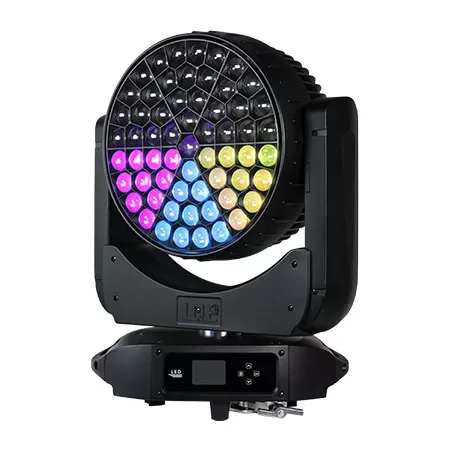
1000w 61x40w RGBW Stage Moving Head Wash Light LW1000
1000W 61x40W LED RGBW Mulichips Moving Head Wash Lights with Zoom (5°–50°), Covering Large Range and Long Distance. Designed to deliver a 5°–50° ultra-large zoom range to achieve a greater wash effect, illuminating stages and events with stunning lighting effects.
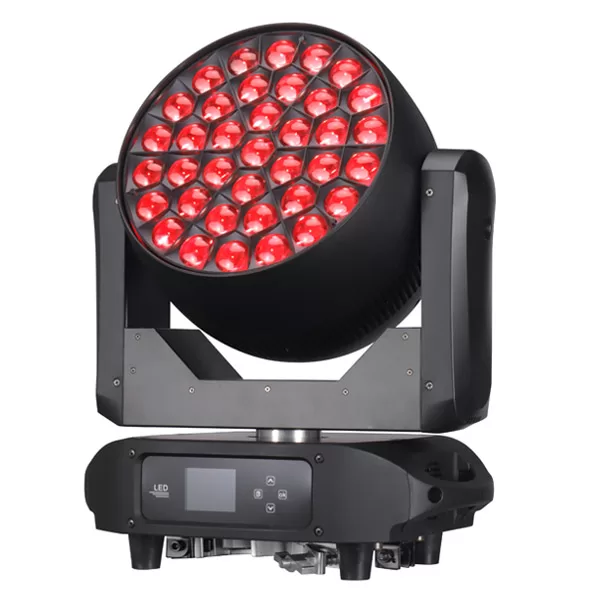
800w 37x40w RGBW Stage Moving Head Wash Light LW800
800W 37x40W LED RGBW Mulichips Moving Head Wash Lights with Zoom (5°-50°), Covering Large Range and Long Distance. Designed to deliver a 5°–50° ultra-large zoom range to achieve a greater wash effect, illuminating stages and events with stunning ring control lighting effects.

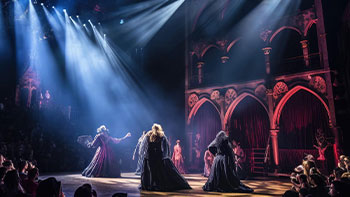
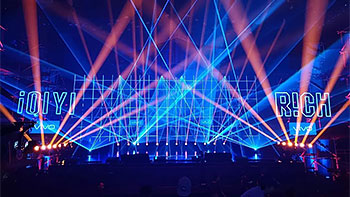

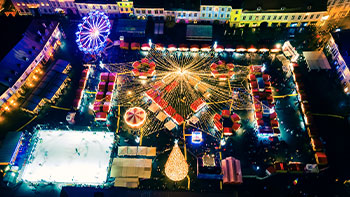








Linkedin
YouTube
Whatsapp: +8618924548390
TikTok